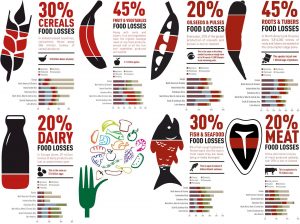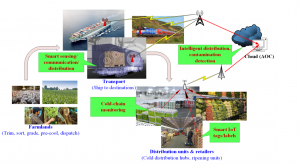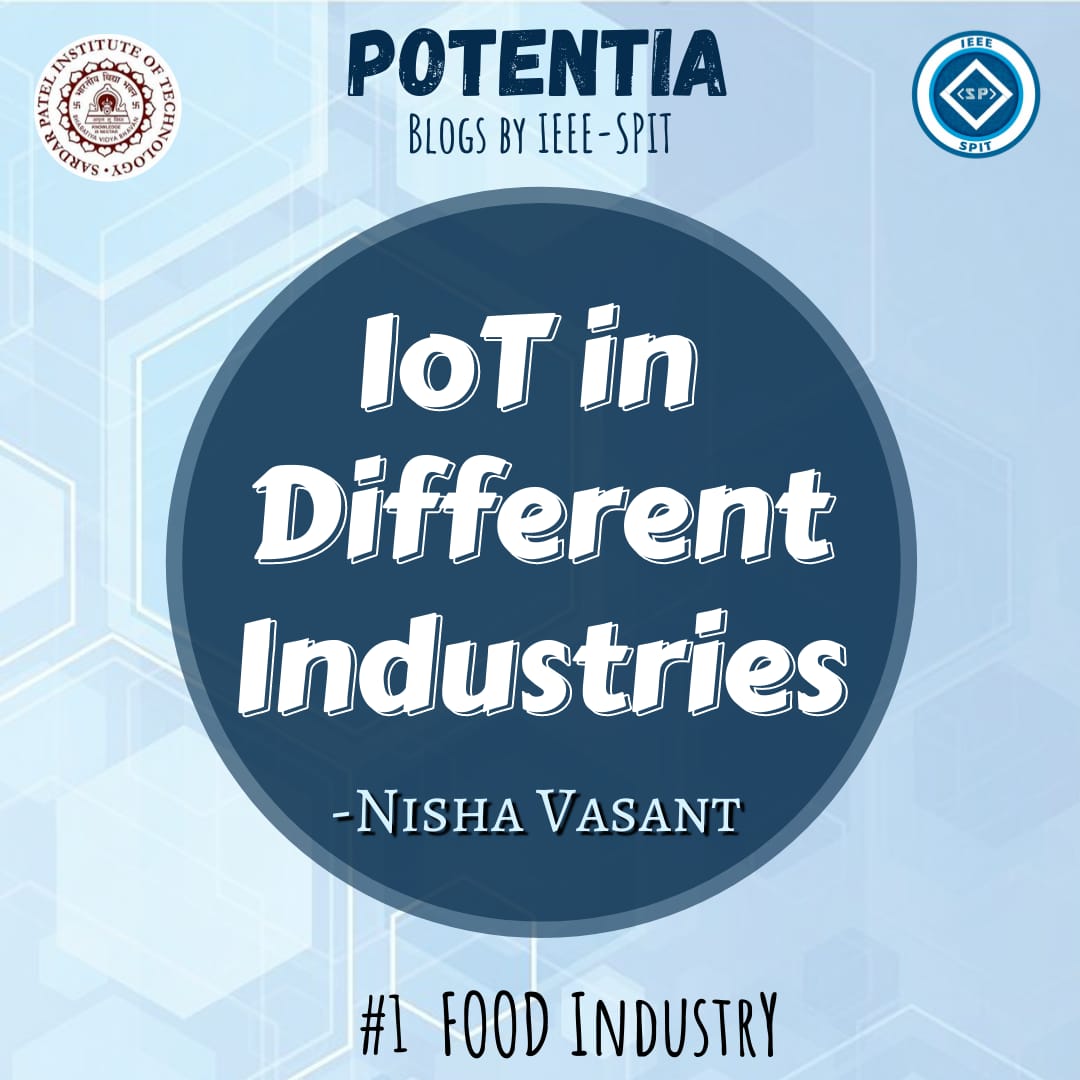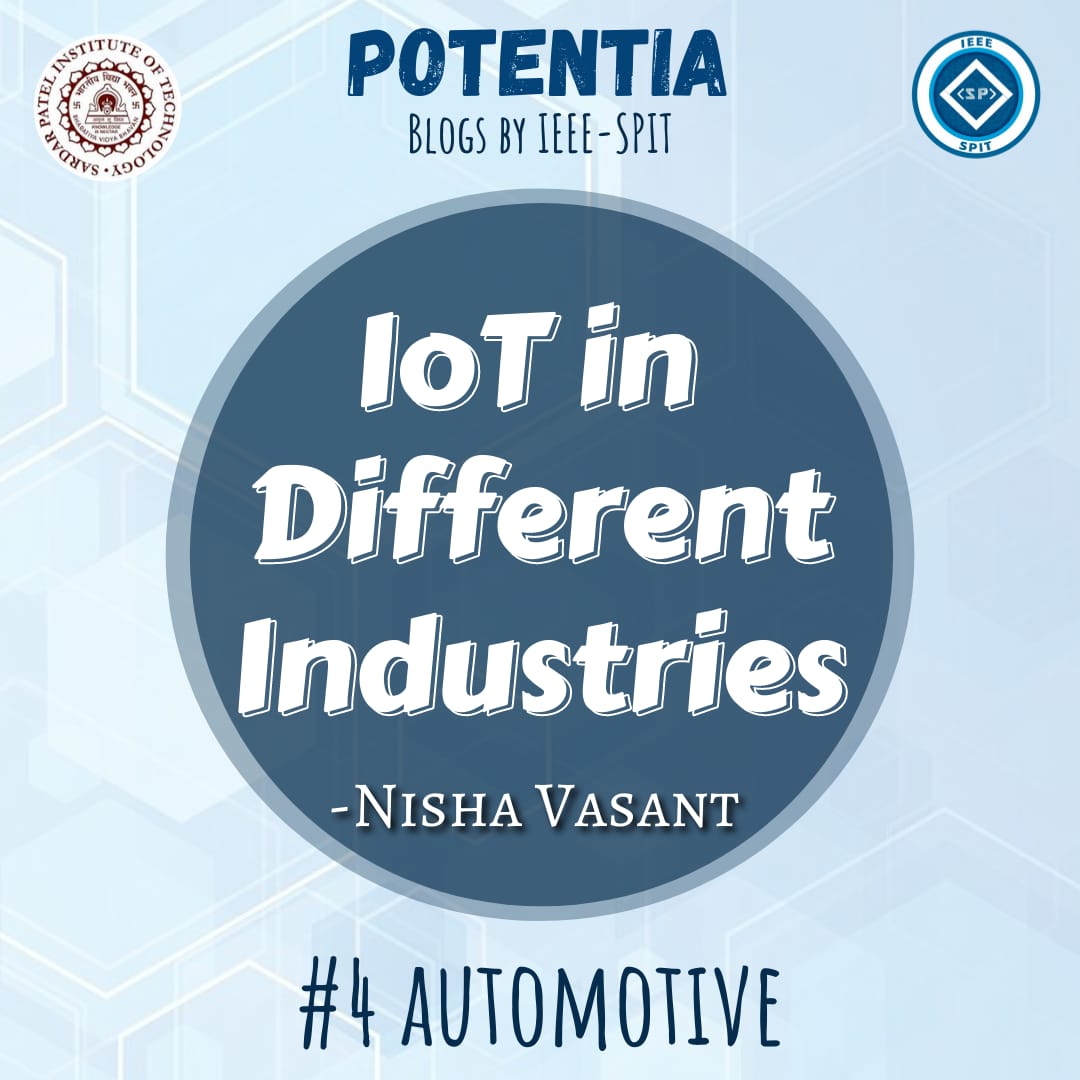
IoT IN THE INDUSTRY #1: Food Waste
The Internet of Things is no more restricted to turning your light bulbs off when you leave the home or giving you statistics on your milk consumption for the month. While home appliances are an exciting ground for fancy gadgets, the real potential of billions of interconnected sensors lies out there in the industry. Hidden away in our factories and warehouses, traveling in the corners of our shipping containers and logging away every bit of data they can lay their silicon ‘fingers’ on, these little circuits are here to change the world at an unprecedented scale.
In this series of articles, we’ll explore the many ways in which connected systems make the world a better, smarter, more efficient place to live in. Not only do they make human lives easier, many of these applications reduce waste, protect resources and allow for efficient distribution of essential commodities. This time, we start with something so fundamentally important to human existence yet so abused in its distribution: Food.

If food waste were a country, it would come in third after the United States and China in terms of impact on global warming and yet 690 million people go hungry everyday. We really do have enough to feed everyone and just need to manage it well. This has been a formidable issue with recent estimates suggesting that one-third to one-half of the food produced globally goes to waste. Think of expired supermarket shelves and everything your local vendor couldn’t sell before it spoilt (now you know why the vegetable market is always cheaper late in the evening: clearance). Now think of that against the backdrop of hungry African (or Mumbai footpath) children to get an idea of the ethical challenges posed by such a situation.
Considering this to be a global scale case of mismanagement and bad estimation is an easy way of bringing IoT into context. Some ways to tackle this at the various nodes of the supply chain can be:
- Food Production
On the inside, a smart farm helps the farmer look after the crop and get the highest yields – but is that really necessary ? A smart farm will produce just as much as demanded by the industry. Farmers sell directly to most big food processing units and then to middlemen who eventually bring it to consumer markets. If such distribution is managed by a central authority with consumer profiles and demand estimates for each sector, it is possible to grow just as much as absolutely needed and avoid discarding unsold surplus.
- Food Distribution
Studies indicate improper or inadequate temperature management—starting at harvest—is the primary contributor to early spoilage and food waste. According to a study by Zest Labs, products harvested from the same field on the same day can have shelf-life that varies by as much as five days. Additional variations can occur throughout the supply chain due to a variety of factors, so it’s critical to monitor and manage products at the pallet level from harvest to store delivery to reduce waste.
Sensors can monitor fluctuations in temperature and humidity to ensure optimal storage conditions. As food in storage is subject to microbes, a phosphine sensor can be used to maintain safe levels of pesticide.
Hence, IoT devices and sensors can be integrated at every point in the supply chain in warehouses, during transport and storage for two purposes. Firstly to maintain a steady optimum temperature to increase the shelf life of the product keeping in mind the effect of regional variations in quality of produce and effects of climate and the season in which it was harvested. Secondly it helps to keep track of what product is at what location and in what quantity so demands can be met from the nearest supplier which reduces transportation time.
- Food Consumption
A considerable amount of food is wasted in individual homes as both spoilt food and access is discarded. This is a result of bad planning and overshopping (especially in that clearance sale). Smart Refrigerators are a solution here to track consumption of individual items so we only buy what is needed, when it is needed and as much as we need based on an analysis of our eating habits.

Many companies like ‘Centaur Analytics’ offer solutions that improve the supply chain using a wide variety of sensors, some of them with very high precision measurements and machine learning algorithms for Big Data analysis.
One might notice though that the problem is described to originate in wealthy countries but it is the marginalised who have to bear the brunt of it. If we want a food surplus in America to aid the Prince of Nigeria then the Engineer’s design lab will have to take into consideration the Policymaker’s office. This will be one of the many exciting challenges awaiting engineers of the future.
-Author: Nisha Vasant
IoT in different industries...

IOT in FOOD INDUSTRY
The Internet of Things is no more restricted to turning your light bulbs off when you leave the home or giving you statistics on your milk consumption for the month. While home appliances are an exciting ground for fancy gadgets, the real potential of billions of interconnected sensors lies out there in the industry. Hidden away in our factories and warehouses, traveling in the corners of our shipping containers and logging away every bit of data they can lay their silicon ‘fingers’ on, these little circuits are here to change the world at an unprecedented scale.........
READ MORE

IOT in Smart Metering
India has been a fully electrified country since 2018 when the last of her villages was connected to the grid. Yet, 1 in 5 households receive less than 8hrs of electricity and half of them never get more than 12hrs. While there are many policy decisions and government bailouts trying to fix the ‘Aggregate Technical And Commercial Losses’ (AT&C) which are the main cause of such dysfunction, here we explore the possibility of using an IoT system with analytics to alleviate these issues in the long term..........
READ MORE

IOT in HEALTHCARE
Health issues in this age are no longer confined to the aged and the weak.In the competitive modern work environment, very few have the time for regular visits to the doctor. It is clear that the younger population faces time constraints and the older ones have mobility constraints. This is the perfect opportunity for recent progress in sensing, embedded systems, wireless communication technology and related fields to come together for Remote Health Monitoring.......
READ MORE

IOT in AUTOMOTIVE
The automotive industry is one of the biggest manufacturing industries in the world. Its huge market and wide range of employment is a fertile ground for modern IoT applications. While lack of newer ‘out-of-the-box’ development in car features has somewhat stagnated the units sold per year since 2016, buyers are now looking for a futuristic vehicle that they can not only control seamlessly but also interact with. A far cry from the flying cars of the 20th century futu .......
READ MORE
